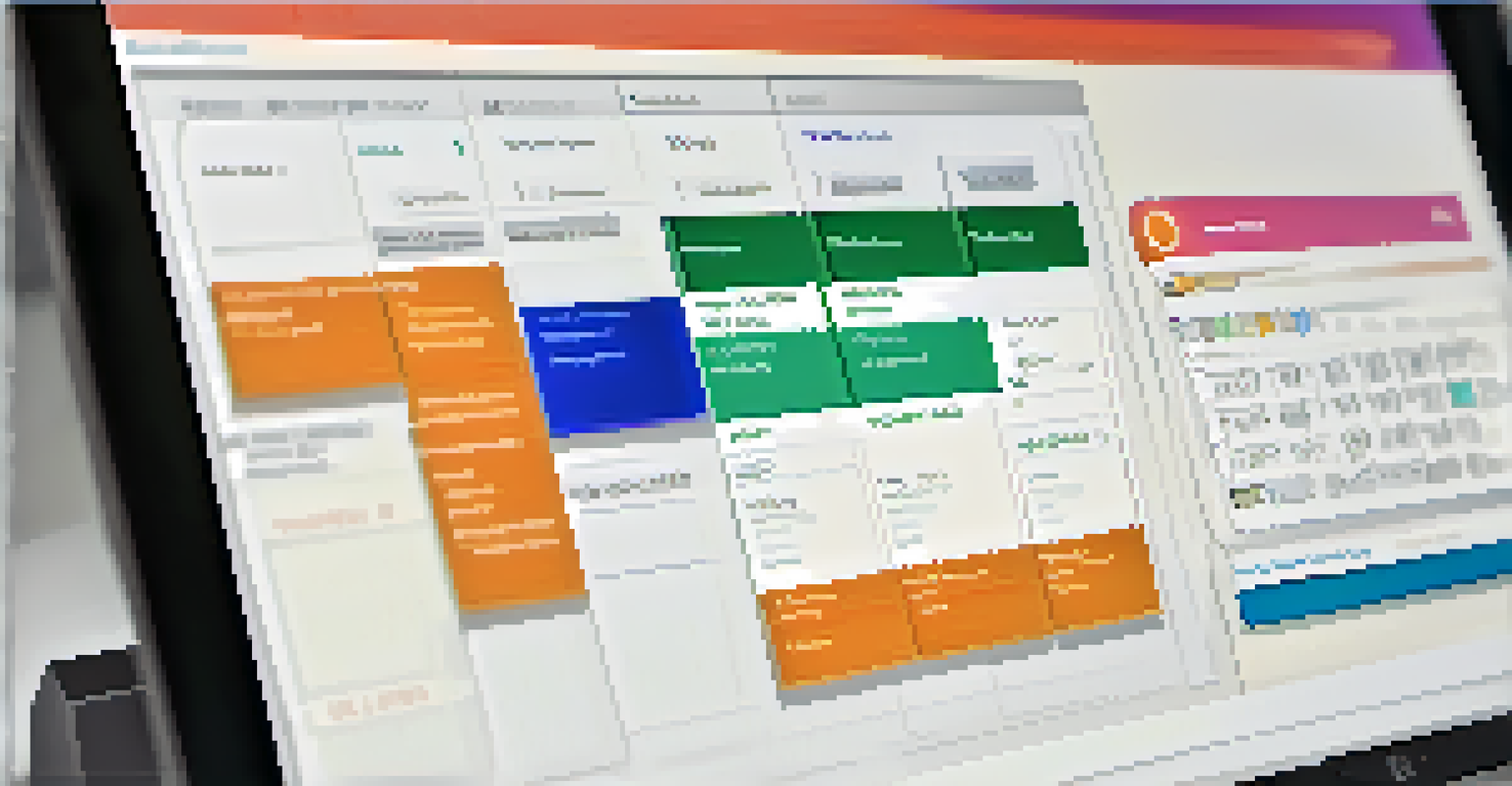Best Practices for Data Entry in Electronic Health Records

Understanding the Importance of Accurate Data Entry
Accurate data entry in Electronic Health Records (EHR) is crucial for patient safety and quality of care. Errors in data can lead to misdiagnoses and inappropriate treatments, which can have serious consequences. Therefore, understanding the importance of precision in every entry isn't just a best practice; it's a necessity.
Data is a precious thing and will last longer than the systems themselves.
Moreover, accurate data entry ensures compliance with regulations and standards in the healthcare industry. This compliance protects healthcare providers from legal issues and enhances the overall integrity of patient records. When data is entered correctly, it contributes to a more reliable and trustworthy healthcare system.
Lastly, focusing on accuracy can improve communication among healthcare providers. When everyone has access to correct and consistent data, it fosters collaboration and better decision-making, ultimately leading to improved patient outcomes.
Implementing Standardized Data Entry Procedures
Standardized procedures for data entry help maintain consistency across all records. By establishing a uniform approach, healthcare staff can minimize discrepancies and ensure that everyone is on the same page. This consistency is key in providing high-quality patient care.

Additionally, training staff on these standardized procedures is vital. When everyone understands how to enter data correctly and efficiently, the chances of errors decrease significantly. Regular training sessions can keep everyone updated on any changes in the procedures or technology.
Lastly, adopting templates and checklists can aid in standardization. These tools can guide staff through the data entry process, ensuring that essential information is not overlooked and that all entries meet the required standards.
Utilizing Technology for Efficient Data Entry
Technology can greatly enhance the efficiency of data entry in EHR systems. Features like voice recognition and automatic prompts can speed up the process and reduce the likelihood of human error. Leveraging these technological advancements can save time and improve accuracy.
In God we trust; all others bring data.
Moreover, utilizing data validation tools can help catch mistakes before they are finalized. These tools can flag inconsistencies or missing information, allowing for corrections to be made on the spot. This proactive approach can lead to cleaner, more reliable data.
Finally, ensuring that the software is user-friendly is crucial. If the interface is complicated or cumbersome, it can lead to frustration and mistakes. Choosing EHR systems that prioritize user experience can make a significant difference in the data entry process.
Regularly Reviewing and Auditing Data Entries
Regular reviews and audits of data entries are essential for maintaining accuracy over time. By periodically analyzing records, healthcare facilities can identify patterns of errors and address them promptly. This practice not only corrects current mistakes but also prevents future ones.
Auditing can also help in assessing the effectiveness of data entry procedures. By evaluating how well the established processes are working, healthcare providers can make necessary adjustments to improve efficiency and accuracy. Continuous improvement is key in the ever-evolving field of healthcare.
Additionally, involving staff in the review process can foster a culture of accountability. When team members understand that their work is being evaluated, they are more likely to take extra care with their data entry tasks.
Enhancing Staff Training and Education
Ongoing training and education are vital for effective data entry in EHR systems. Regular workshops and refresher courses can help staff stay updated on best practices and new technologies. This commitment to learning ensures that everyone is equipped with the skills needed for accurate data entry.
Moreover, incorporating real-life scenarios into training can enhance understanding. By simulating actual data entry situations, staff can learn how to handle common challenges and errors. This hands-on approach can lead to greater confidence and competence in their roles.
Finally, encouraging a culture of questions and feedback can create a supportive learning environment. When staff feel comfortable seeking help or expressing concerns, it leads to better overall performance and fewer mistakes.
Focusing on Data Privacy and Security
Data privacy and security are paramount in healthcare, especially when it comes to sensitive patient information. Ensuring that data entry practices comply with regulations like HIPAA protects patient privacy and builds trust. Staff must be trained on these regulations to prevent accidental breaches.
Additionally, implementing robust security measures is essential. This includes using secure passwords, encryption, and access controls to safeguard patient records. When staff are aware of the importance of these measures, they are more likely to follow them diligently.
Lastly, regularly reviewing security protocols can help identify potential vulnerabilities. Just as data accuracy is essential, so is ensuring that the systems used for data entry are secure from threats. A proactive approach to security can prevent data leaks and maintain confidentiality.
Encouraging Clear and Concise Language in Data Entry
Using clear and concise language in data entry enhances understanding and reduces ambiguity. Avoiding jargon or complex terminology helps ensure that all team members can interpret the information accurately. This clarity is crucial for effective communication among healthcare providers.
Moreover, encouraging staff to provide additional context when necessary can improve comprehension. For example, including notes or explanations alongside data entries can help clarify unusual circumstances. This simple practice can prevent misunderstandings and enhance patient care.

Finally, promoting a culture of clarity encourages attention to detail. When staff prioritize clear communication in their data entries, it leads to a more organized and efficient EHR system, ultimately benefiting everyone involved.
Fostering a Culture of Accountability and Improvement
Creating a culture of accountability within the healthcare setting is essential for effective data entry. When team members understand their responsibilities and take ownership of their work, it fosters a sense of pride and diligence. This accountability can lead to more careful and accurate data entry practices.
Additionally, encouraging feedback and open discussion about errors can lead to continuous improvement. When mistakes are viewed as learning opportunities rather than failures, it promotes a proactive approach to data accuracy. This mindset can significantly enhance overall data quality.
Finally, recognizing and rewarding accurate data entry can motivate staff to maintain high standards. Celebrating successes, no matter how small, creates a positive environment that encourages everyone to strive for excellence in their roles.